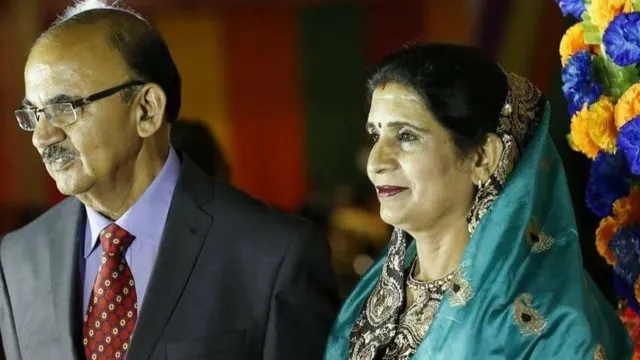Mamta Pathak, a retired chemistry professor from Madhya Pradesh, transformed her murder trial into a forensic lesson as she argued against allegations of electrocuting her husband. Despite her scientific explanations, the High Court upheld her conviction, pointing to years of marital strife and strong circumstantial evidence.
A Courtroom Like a Classroom
When 63-year-old Mamta Pathak stood before judges in the Madhya Pradesh High Court, she clasped her hands in a respectful namaste, dressed in a white sari with glasses perched on her nose. Instead of pleading emotionally, she argued like a teacher, explaining chemical reactions, acids, and electron microscopy.
“In the post-mortem, it is not possible to differentiate between a thermal burn and an electric burn mark without proper chemical analysis,” she insisted, quoting forensic medicine books as though she were delivering a lecture.
But the bench was unconvinced. Justice Vivek Agarwal reminded her that the post-mortem doctor had clearly reported signs of electrocution.
Viral Courtroom Exchange
The surreal exchange — a murder accused lecturing judges on chemical processes — was caught on video and quickly went viral in India. Viewers were stunned by the spectacle of a retired professor, accused of killing her husband, using forensic jargon to argue her case.
Mamta claimed she had been studying law in prison and used her knowledge to highlight “gaps” in the investigation: no forensic experts at the scene, no CT scan of the body, and what she described as flaws in the autopsy.
But the judges said the evidence was far stronger than her arguments.
The Prosecution’s Case
The state accused Mamta of drugging her husband, Dr. Neeraj Pathak, with sleeping pills before electrocuting him in their home in April 2021. Police seized an 11-meter electric wire, recovered partially used strips of sedatives, and presented CCTV footage from the house. The autopsy attributed Neeraj’s death to cardiorespiratory shock from electrical current.
The court also noted her delay in reporting the death and her unusual decision to travel out of town with her son on the day of the incident before notifying authorities.
A Marriage in Turmoil
For decades, Mamta and her husband Neeraj Pathak, a retired doctor, appeared to live an orderly middle-class life. But the court heard of deep marital discord. Neeraj had accused Mamta of locking him in rooms, denying him food, and physically torturing him. On the very morning of his death, he reportedly told an associate that he feared for his life.
Police later recovered sleeping pills, electrical wire, and CCTV footage suggesting foul play. The autopsy confirmed death by electrocution.
Key Evidence Against Mamta Pathak
- Autopsy Report: Cause of death ruled as electrocution.
- Sleeping Pills: Six tablets missing from a strip; husband allegedly sedated.
- Seized Wire: An 11-meter cord with a plug recovered from the home.
- Delayed Reporting: Death reported days later, after unusual travel.
- Testimony of Discord: Husband’s calls and complaints citing harassment.
The Court’s Verdict
Mamta argued passionately that her husband’s heart disease, not electrocution, caused his death. She presented photos, birthday cards from her children, and even tried to frame herself as a “best mother” and caring wife.
But the judges concluded otherwise. They upheld her life sentence, ruling that she had drugged her husband and electrocuted him. Her appeals collapsed under the weight of circumstantial evidence.
In the end, the professor who turned her trial into a chemistry class could not rewrite the facts.























